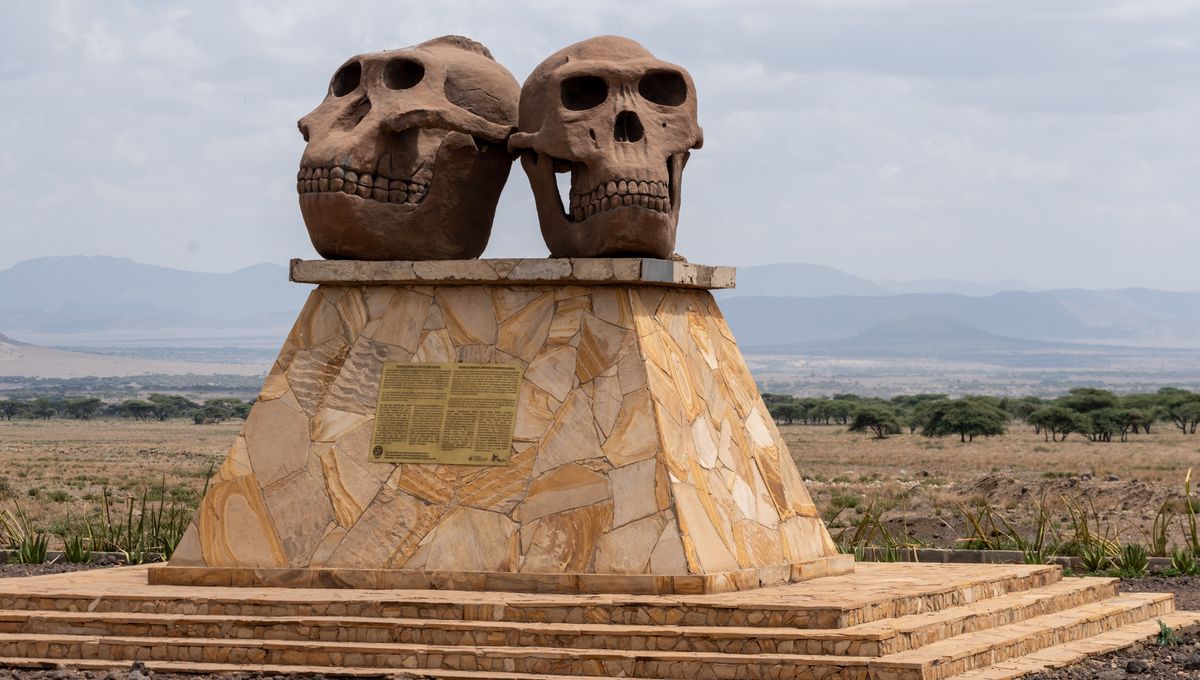
The story of our species begins in Africa, although our ability to tell that story is based on patchy evidence that has been steadily vanishing for the past 2 million years. Much of what’s left comes from the famous East African Rift System (EARS) – often referred to as the Cradle of Humankind – although the reality is that we don’t really know what early humans were up to outside of the Rift Valley.
Because vertebrate fossils only tend to survive if they are preserved in sedimentary rocks, ancient hominid remains are typically found in sedimentary basins. As a result, the early human fossil record is concentrated in a few hotspots where the geological conditions have allowed for the long-term preservation of these remains.
This, in turn, means that our understanding of human evolution is based entirely on what we have found in these hotspots. Within the eastern branch of the EARS, for instance, researchers have discovered a wealth of sites containing traces of the earliest known hominids to walk the Earth.
Olduvai Gorge in Tanzania, for example, has yielded the remains of a 2-million-year-old ape-like hominid species called Paranthropus boisei, as well as the more human-like Homo habilis. Yet the eastern branch of the rift system covers less than one percent of the African continent, and early humans are likely to have occupied a much broader range than this narrow strip.
Seeking to estimate the size of the gaps in the archaeological record, the authors of a new study point out that while an abundance of fossils have been found in the EARS, most of those from elsewhere in Africa are likely to have long-since disappeared. “Because the evidence of early human evolution comes from a small range of sites, it’s important to acknowledge that we don’t have a complete picture of what happened across the entire continent,” explained study author W. Andrew Barr in a statement.
To underline this point, the researchers examined the ranges occupied by modern mammals within the Rift Valley, finding that for medium and large-bodied animals, the EARS typically made up just 1.6 percent of their habitat. It’s therefore pretty reasonable to assume that early humans didn’t restrict themselves to this small area, but covered a considerably larger geographic range.
Summarizing this observation, the authors say that “modern rift specialists are exceedingly rare, and early hominins certainly lived outside the rift.”
The researchers also analyzed the variability in skull and body sizes among modern-day African primates, finding that both baboons and guenons tend to be larger in central Africa than in east Africa. However, because the EARS runs from north to south, it would be impossible to detect this east-west pattern of morphological variation if looking only at specimens from within the Rift Valley.
“If this east–west pattern of size-related clinal variation held true for hominin cranial morphology, then the rift would systematically miss out on this aspect of variation, leading researchers to systematically underestimate morphological variation in early hominin populations,” write the study authors. In other words, we have no idea how the hominids living within the Rift Valley might have compared to those from elsewhere in Africa, whose remains are no longer available for study.
Commenting on these findings, co-author Bernard Wood said that “we must avoid falling into the trap of coming up with what looks like a comprehensive reconstruction of the human story, when we know we don’t have all of the relevant evidence.”
“Imagine trying to capture the social and economic complexity of Washington D.C. if you only had access to information from one neighborhood,” Wood adds. “It helps if you can get a sense of how much information is missing.”
The study is published in the journal Nature Ecology & Evolution.
Source Link: Why The Rift Valley May Not Be The Cradle Of Humankind After All